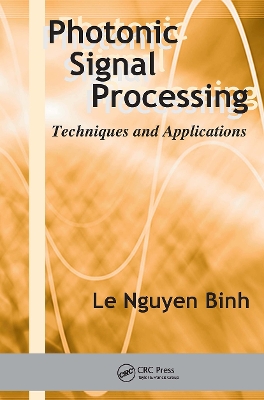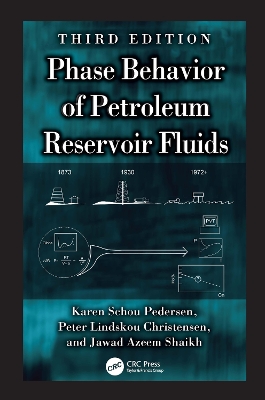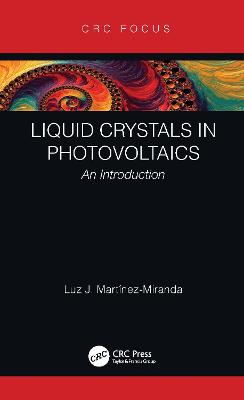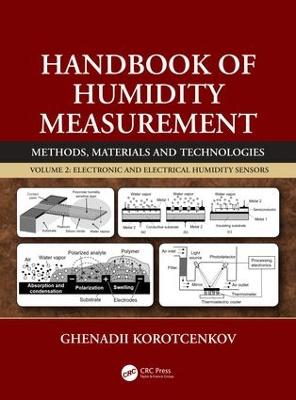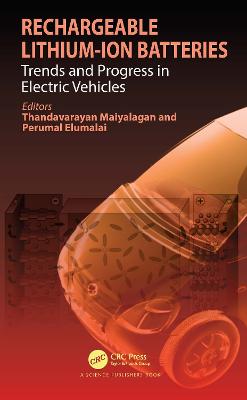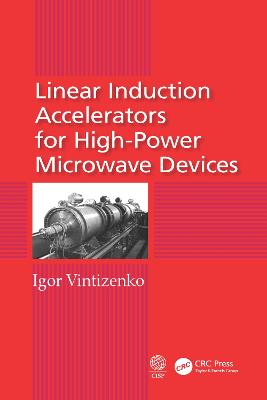Handbook of Humidity Measurement
 -10%
portes grátis
-10%
portes grátis
Handbook of Humidity Measurement
Methods, Materials and Technologies, Three-Volume Set
Korotcenkov, Ghenadii
Taylor & Francis Ltd
02/2020
1376
Inglês
9781138297876
15 a 20 dias
2710
Table of Contents
Chapter 1: Water, water vapors and humidity
Chapter 2: Why do we need to control humidity?
Chapter 3: Optical hygrometers
Chapter 4: Atmosphere monitoring using methods of absorption of electromagnetic radiation. FTIR spectroscopy
Chapter 5: Atmosphere monitoring using methods of absorption of electromagnetic radiation. Microwave absorption
Chapter 6: GPS monitoring of atmospheric water vapour
Chapter 7: Atmosphere monitoring using methods of absorption of electromagnetic radiation. THz absorption
Chapter 8: LIDAR systems for atmosphere monitoring
Chapter 9: Upper tropospheric and stratospheric water vapour control
Chapter 10: Introduction in humidity measurement by optical and fiber-optic sensors
Chapter 11: Optical and fiber-optic humidity sensors: General consideration
Chapter 12: Absorption or colorimetric-based optical humidity sensors
Chapter 13: Moisture indicators (3-1-2-1)
Chapter 14: Refractometry-based optical humidity sensors
Chapter 15: Luminescence (fluorescence)-based humidity sensors
Chapter 16: Interferometric humidity sensors
Chapter 17: Microfiber-based humidity sensors
Chapter 18: Humidity sensors based on special fibers
Chapter 19: Surface Plasmon resonance-based humidity sensors
Chapter 20: Lossy mode resonance based humidity sensors
Chapter 21: Ellipsometry-based humidity sensors
Chapter 22. Design and fabrication of optical and fiber-optic humidity sensors
Chapter 23: Integrated humidity sensors
Chapter 24: Outlook: State of the art and future prospects of optical and fiber-optic sensors
Volume II
Table of contents
Chapter 1: Introduction in electronic and electrical humidity sensors Chapter 2. Gravimetric method of humidity measurement
Chapter 3: Mechanical (hair) hygrometer
Chapter 4: Psychrometer
Chapter 5: Chilled mirror hygrometer or mirror-based dew-point sensors
Chapter 6: Heated salt-solution method for humidity measurement
Chapter 7: Electrolytic or coulometric hygrometers
Chapter 8: Humidity measurement based on Karl Fischer titration
Chapter 9: Other conventional methods of humidity measurementChapter 10: ?apacitance-based humidity sensors
Chapter 11: Resistive humidity sensors
Chapter 12: Gravimetric humidity sensorsChapter 13: Cantilever- and membrane-based humidity sensorsChapter 14: Thermal conductivity-based hygrometers
Chapter 15: Field ionization humidity sensors
Chapter 16: Humidity sensors based on thin film and field-effect transistorsChapter 17: Hetero-junction-based humidity sensors
Chapter 18: Kelvin probe as a humidity sensorChapter 19: Solid state electrochemical humidity sensors
Chapter 20: Microwave-based humidity sensors
Chapter 21: Integrated humidity sensors
Chapter 22: Humidity sensors on flexible substrate
Chapter 23: Non-traditional approaches to humidity measurement
Chapter 24: Summary and outlook
Volume III
Table of Contents
Chapter 01 Polymers
Chapter 02 Metal oxide in humidity sensors
Chapter 03 Al2O3 as a humidity-sensitive material
Chapter 04 Carbon-based materials
Chapter 05 Semiconductor-based humidity sensors
Chapter 06 Porous silicon
Chapter 07 Mesoporous silica and its prospects for humidity sensor application
Chapter 08 Aluminosilicate (zeolites) -based humidity sensors
Chapter 09 Metal phosphate-based humidity sensitive materials
Chapter 10 Black phosphorus and phosphorene based humidity sensors
Chapter 11 Metal-organic framework-based humidity sensors
Chapter 12 Supramolecular materials
Chapter 13 Biomaterials as sensing elements of humidity sensors
Chapter 14 Substrates and electrodes in humidity sensors
Chapter 15 Fundamentals of microfabrication technologies
Chapter 16 Micromachining platforms for humidity sensors and examples of their fabrication
Chapter 17 Platforms and materials for QCM and SAW-based humidity sensors
Chapter 18 Technologies suitable for fabrication of humidity sensing layers. General consideration
Chapter 19 Polymer technologies
Chapter 20 Synthesis of humidity-sensitive metal oxides. Powder technologies
Chapter 21 Humidity sensors based on individual metal oxide 1D structures. Fabrication features and application prospects
Chapter 22 Nanofiber-based humidity sensors and features of their fabrication
Chapter 23 Humidity sensors based on metal oxide mesoporous-macroporous and hierarchical structures
Chapter 24 Packaging, air cleaning and storage of humidity sensors
Chapter 25 Humidity sensor selection and operation guide
Chapter 26 Humidity sensors testing and calibration
Chapter 27 Comparative analysis of humidity sensors and their advantages and shortcomings
Chapter 28 Market of Electronic Humidity Sensors
Table of Contents
Chapter 1: Water, water vapors and humidity
Chapter 2: Why do we need to control humidity?
Chapter 3: Optical hygrometers
Chapter 4: Atmosphere monitoring using methods of absorption of electromagnetic radiation. FTIR spectroscopy
Chapter 5: Atmosphere monitoring using methods of absorption of electromagnetic radiation. Microwave absorption
Chapter 6: GPS monitoring of atmospheric water vapour
Chapter 7: Atmosphere monitoring using methods of absorption of electromagnetic radiation. THz absorption
Chapter 8: LIDAR systems for atmosphere monitoring
Chapter 9: Upper tropospheric and stratospheric water vapour control
Chapter 10: Introduction in humidity measurement by optical and fiber-optic sensors
Chapter 11: Optical and fiber-optic humidity sensors: General consideration
Chapter 12: Absorption or colorimetric-based optical humidity sensors
Chapter 13: Moisture indicators (3-1-2-1)
Chapter 14: Refractometry-based optical humidity sensors
Chapter 15: Luminescence (fluorescence)-based humidity sensors
Chapter 16: Interferometric humidity sensors
Chapter 17: Microfiber-based humidity sensors
Chapter 18: Humidity sensors based on special fibers
Chapter 19: Surface Plasmon resonance-based humidity sensors
Chapter 20: Lossy mode resonance based humidity sensors
Chapter 21: Ellipsometry-based humidity sensors
Chapter 22. Design and fabrication of optical and fiber-optic humidity sensors
Chapter 23: Integrated humidity sensors
Chapter 24: Outlook: State of the art and future prospects of optical and fiber-optic sensors
Volume II
Table of contents
Chapter 1: Introduction in electronic and electrical humidity sensors Chapter 2. Gravimetric method of humidity measurement
Chapter 3: Mechanical (hair) hygrometer
Chapter 4: Psychrometer
Chapter 5: Chilled mirror hygrometer or mirror-based dew-point sensors
Chapter 6: Heated salt-solution method for humidity measurement
Chapter 7: Electrolytic or coulometric hygrometers
Chapter 8: Humidity measurement based on Karl Fischer titration
Chapter 9: Other conventional methods of humidity measurementChapter 10: ?apacitance-based humidity sensors
Chapter 11: Resistive humidity sensors
Chapter 12: Gravimetric humidity sensorsChapter 13: Cantilever- and membrane-based humidity sensorsChapter 14: Thermal conductivity-based hygrometers
Chapter 15: Field ionization humidity sensors
Chapter 16: Humidity sensors based on thin film and field-effect transistorsChapter 17: Hetero-junction-based humidity sensors
Chapter 18: Kelvin probe as a humidity sensorChapter 19: Solid state electrochemical humidity sensors
Chapter 20: Microwave-based humidity sensors
Chapter 21: Integrated humidity sensors
Chapter 22: Humidity sensors on flexible substrate
Chapter 23: Non-traditional approaches to humidity measurement
Chapter 24: Summary and outlook
Volume III
Table of Contents
Chapter 01 Polymers
Chapter 02 Metal oxide in humidity sensors
Chapter 03 Al2O3 as a humidity-sensitive material
Chapter 04 Carbon-based materials
Chapter 05 Semiconductor-based humidity sensors
Chapter 06 Porous silicon
Chapter 07 Mesoporous silica and its prospects for humidity sensor application
Chapter 08 Aluminosilicate (zeolites) -based humidity sensors
Chapter 09 Metal phosphate-based humidity sensitive materials
Chapter 10 Black phosphorus and phosphorene based humidity sensors
Chapter 11 Metal-organic framework-based humidity sensors
Chapter 12 Supramolecular materials
Chapter 13 Biomaterials as sensing elements of humidity sensors
Chapter 14 Substrates and electrodes in humidity sensors
Chapter 15 Fundamentals of microfabrication technologies
Chapter 16 Micromachining platforms for humidity sensors and examples of their fabrication
Chapter 17 Platforms and materials for QCM and SAW-based humidity sensors
Chapter 18 Technologies suitable for fabrication of humidity sensing layers. General consideration
Chapter 19 Polymer technologies
Chapter 20 Synthesis of humidity-sensitive metal oxides. Powder technologies
Chapter 21 Humidity sensors based on individual metal oxide 1D structures. Fabrication features and application prospects
Chapter 22 Nanofiber-based humidity sensors and features of their fabrication
Chapter 23 Humidity sensors based on metal oxide mesoporous-macroporous and hierarchical structures
Chapter 24 Packaging, air cleaning and storage of humidity sensors
Chapter 25 Humidity sensor selection and operation guide
Chapter 26 Humidity sensors testing and calibration
Chapter 27 Comparative analysis of humidity sensors and their advantages and shortcomings
Chapter 28 Market of Electronic Humidity Sensors


